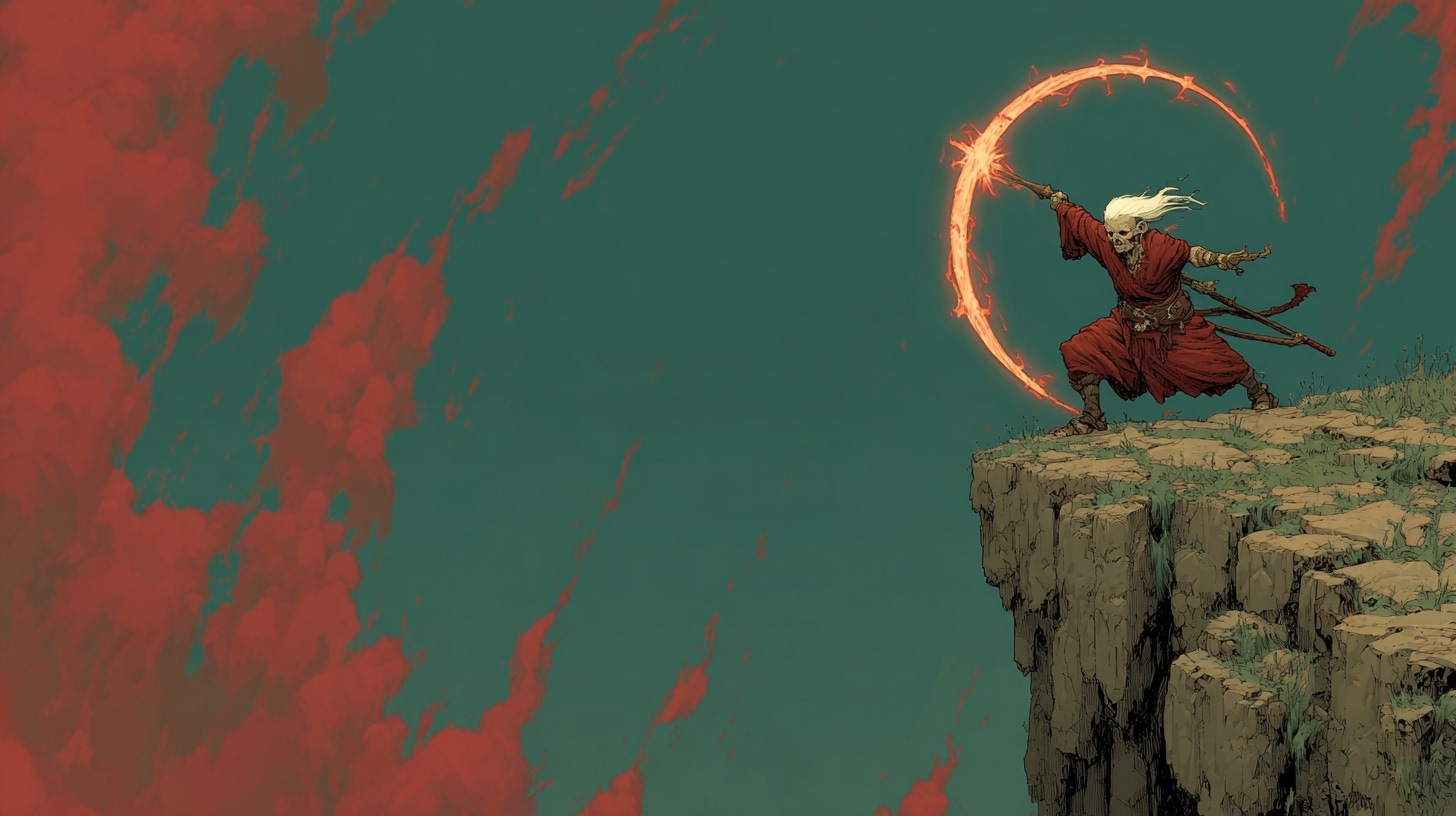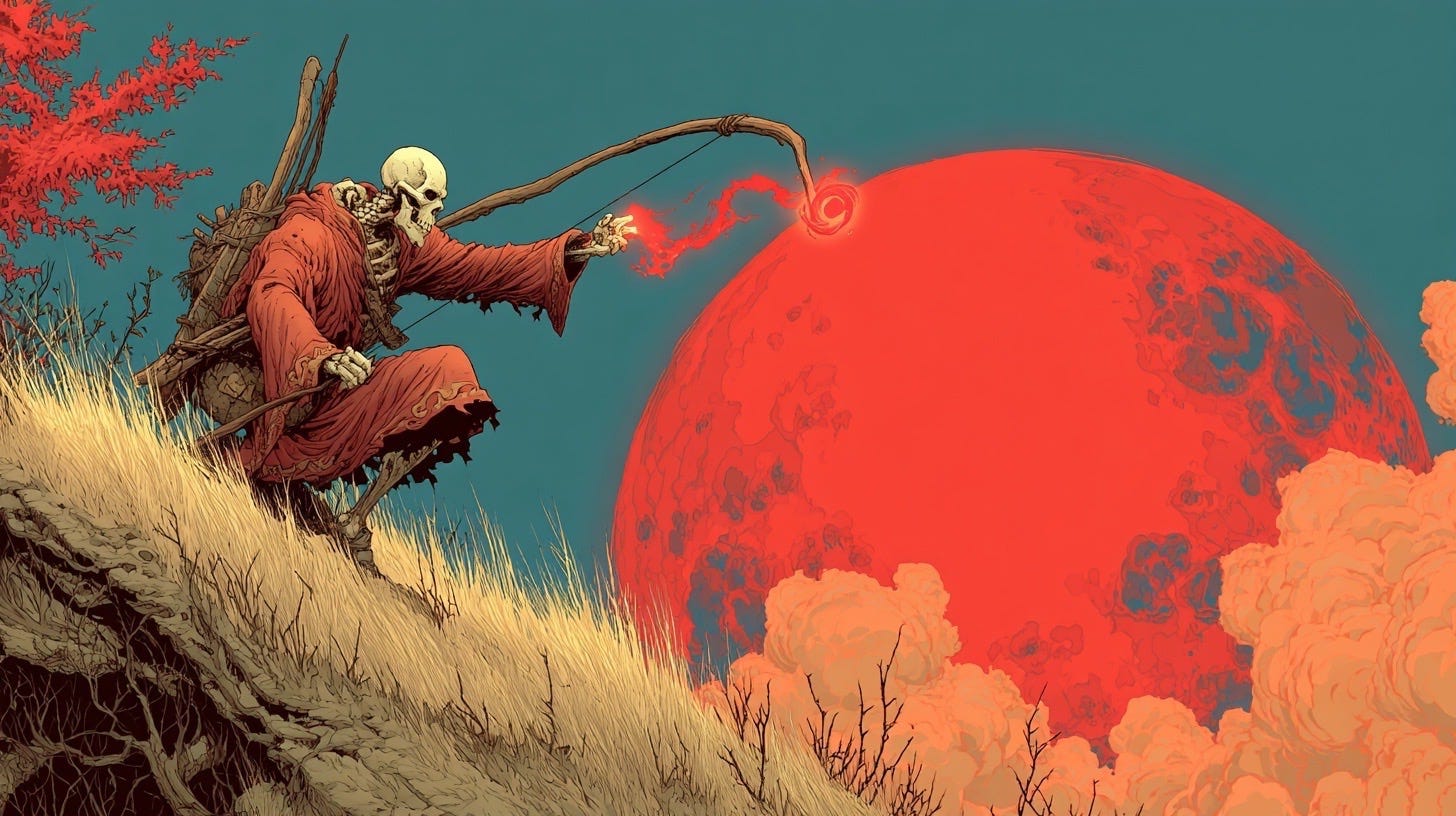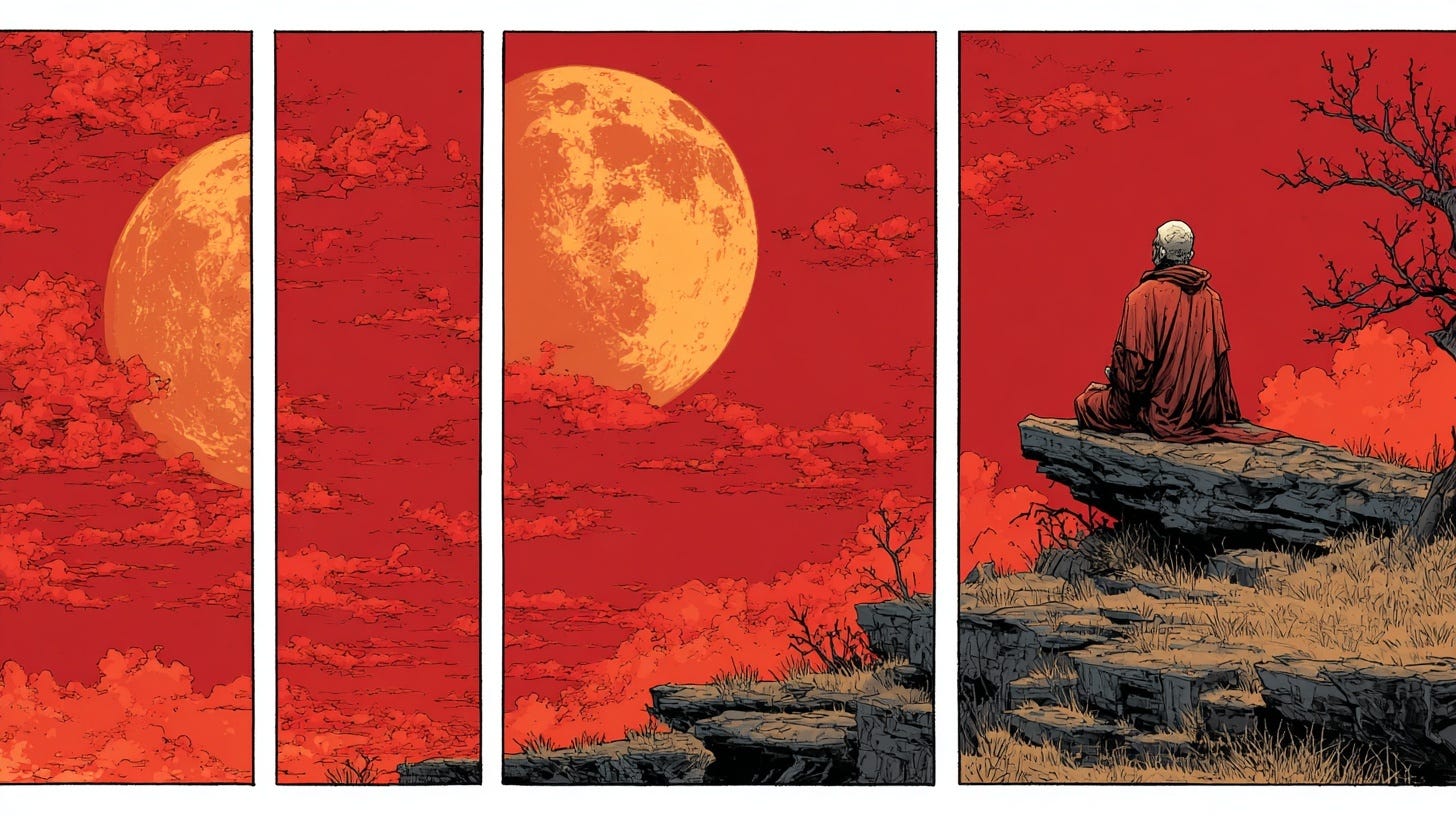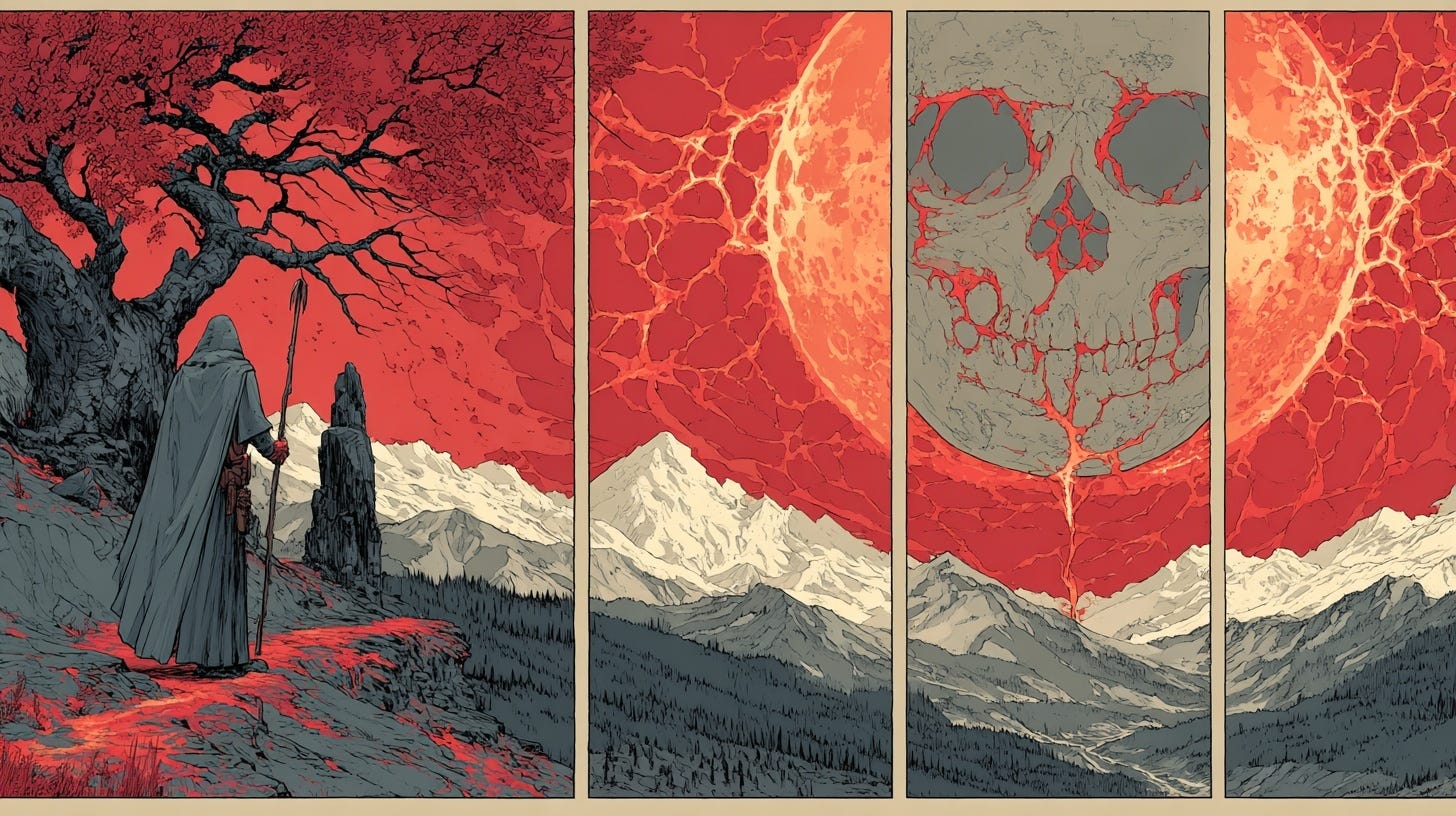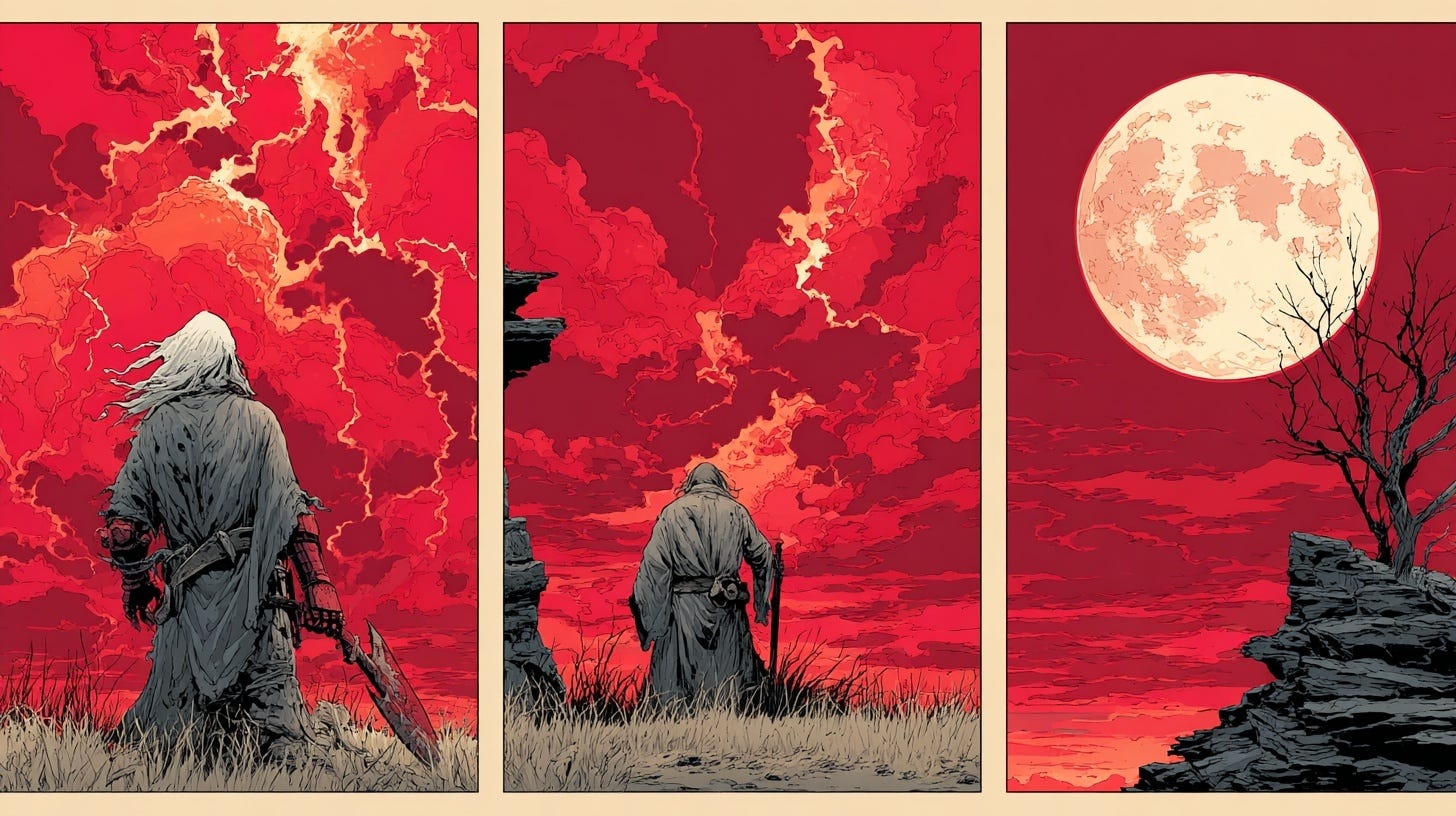Tuned In: How Visualization Shapes Transdimensional Dialogue
Ancient techniques meet modern ITC in this guide to grounding, intention, and energy preparation for clearer communication with the unseen.
By Matthew D. Jackson | Obscura Vox | August 2025
So you’re about to start an ITC session. The spirit box is primed, batteries fresh, recorder glowing like a lighthouse in the dark. But before you flip that switch, ask yourself—what’s the frequency of your intention? I’ve been saying that for years, from my early PARAHOLICS videos to these essays on Obscura Vox. It’s not a slogan—it’s the spine of this work. Intention carries weight: it can shift atmosphere, alter energy, even touch the physical.
A text of Tibetan medicine, within the Buddhist tradition, gives a recipe for a healing remedy that always calls for a white bone-handled knife. But here’s the kicker: the text specifies that the knife should have been used to murder at least thirteen people. If you can’t find such a relic, it says, then use one that has murdered seven. And if even that’s impossible? Then take an ordinary white bone-handled knife—and, this is the crucial step—tell it it has murdered thirteen people (Strange Familiars).
The point isn’t about the knife’s bloody history; it’s about what the practitioner invests into it. The ritual is training the healer to understand that intention is itself an ingredient, as vital to the remedy as the herbs or minerals being mixed. Across traditions, this lesson holds: what matters is not the tool, but the will and focus of the one wielding it.
Visualization is how intention learns to walk. It takes the raw spark of will and clothes it in form, giving the unseen something clear to answer.
This same truth carries directly into ITC. Whether you lean toward modern physics that whispers all reality is consciousness (Campbell), or you stand with traditions that speak of angels, faeries, and the dead—the bridge is unchanged. You are using the mind to meet the Other.
What We Mean by “Transdimensional Dialogue”
At Obscura Vox, we use that phrase deliberately. We’re not chasing clichés—ghosts in chains, horned demons, campfire archetypes. Transdimensional dialogue is interaction with intelligences of unknown origin—some may be the departed, some may be consciousness fields, some something else entirely. Unlike traditional ghost-hunting, which often centers on contacting the deceased, transdimensional dialogue embraces a broader spectrum of consciousness, including entities or energies that may not fit conventional definitions of “ghosts.” What matters is that dialogue happens across the veil of perception, where intention and frequency set the terms.
Our touchstones are many: Buddhist mindfulness (Feldman), Hindu energetics (Judith), Christian mysticism (Gibbs), Jewish Kabbalah, Sufi prayer. Not as dogma, but as tested technologies of the sacred. And at the root of them all sits intention—clear, focused, ethical. Grounding rituals that once steadied monks and mystics are just as vital when the instrument in your hand is a radio scanner or a digital feedback loop.
The Bridge Between Consciousness and Signal
Every ITC operator learns this, sooner or later: your mind is the first receiver. The hardware—circuitry, antennas, filters—only extends what you’ve already tuned in your head and heart. Visualization isn’t make-believe. It’s calibration. Neuroscience even shows us that the brain fires as if the vision were real, engaging the same areas of the visual cortex during imagination as during sight (Kosslyn et al.). Mystical traditions tell us the same thing with different words: where the imagination goes, energy follows.
Enter a derelict hospital with only fear in your chest, and you’ll meet the Trickster. He’s there in every culture—Coyote, Loki, Anansi—feeding on attention, imitating truth, twisting signal into echo (Hansen). You’ll hear him in ITC as nonsense loops, mocking laughter, voices that parrot back your questions.
But begin with visualization—a clear channel, a portal of light, a deliberate invitation to benevolence—and the quality shifts. When a voice answers, it lands with coherence instead of hollowness. Trickster chatter slides away. That’s because the phenomena of the unseen always reflects what we bring to it. Imagination shapes that reflection: come with fear, and fear answers; come with clarity, and clarity responds. Visualization turns intention into a pattern the unseen cannot help but echo back (Jackson, “Echoes Beyond the Veil”).
Sound as a Foundation for Visualization
Visualization doesn’t always begin with imagery. Sometimes it begins with vibration. Sound creates a vibrational foundation that amplifies visualization, turning your ITC device into a resonant bridge for dialogue. Long before spirit boxes, practitioners tuned consciousness with rhythm and chant—Hindus with Om, Buddhists with bowls and bells, Christians with psalms, Sufis with whirling song. These sounds don’t just fill a room; they align the body with a rhythm larger than itself, coaxing the mind into liminal states where unseen dialogue is easier to touch (Feldman; Judith).
When you immerse yourself in resonant tones—whether the low hum of a singing bowl or a drone at 432 Hz or 528 Hz—the sound itself becomes the scaffolding for visualization. The frequency sets your nervous system into steadiness, and your imagination builds images on that foundation. Close your eyes, let the vibration move through you, and then picture your ITC device pulsing with the same glow—no longer just a machine, but a vessel resonating with presence.
In this way, frequencies support the soundscapes that prepare intention for ITC contact. You’re not waiting for dialogue to begin—you’re already inhabiting the state that invites it.
Grounding and Protection
But resonance without grounding is like lightning without a rod—it’s powerful but risks scattering your focus or leaving you vulnerable. Haunted sites especially—old hospitals, prisons, battlegrounds—carry layers of trauma. Without grounding, you risk walking away foggy, drained, or worse: tangled with something that thrives on fear.
Grounding is about anchoring yourself in stability before you open the channel. Here’s a practice: sit or stand, and imagine roots from your feet sinking deep, like the Bodhi tree rooting the Buddha (Bhikkhu Bodhi) or prana coursing through earth (Judith). Feel yourself connected, steady. Then picture a sphere of light wrapping around you—not a fragile bubble, but a living shield. Christian mystics call this grace (Gibbs). Hindus call upon deities like Ganesha to guard thresholds. Speak aloud: I connect only with intelligences of wisdom and benevolence.
I’ve even carried this into fieldwork. Driving in daylight to Proctor Cemetery, I pictured Henry Dixon in the passenger seat beside me—not a ghost, but a visualization of presence, a way of aligning my focus before the work began. By the time I entered the cemetery, something uncanny unfolded: without ever visiting before, consulting a map, or asking for directions, I walked straight to his grave among rows of weathered obelisks. It was the wildest, damnedest thing. And when the impression came—“He wanted to be with her”—it landed with a weight I couldn’t dismiss. Visualization and intention had tuned my compass before the spirit box was ever switched on (Jackson, “The Ghost of Henry Dixon”).
Grounding isn’t superstition—it’s boundary-making. You’re declaring where the door is, and who’s welcome to step through.
And once the door is set, the next step is to decide what kind of signal you’re sending through it. That’s where manifestation comes in.
Manifestation and Frequency Matching
If grounding is the anchor, manifestation is the signal you send once you’re steady. Grounding secures your footing; manifestation is your broadcast. It’s the resonance that says: this is who I am, and this is what I seek.
Here’s a simple way to practice: breathe slow—inhale four counts, hold, exhale six—until your whole body hums in rhythm. In that state, speak or think your alignment: I seek truthful, benevolent dialogue. You’re not just saying words—you’re tuning your inner frequency to match what you want to connect with.
Different traditions describe this same process in their own language. Tantra calls it chakra alignment (Judith). Buddhism calls it stillness of mind (Bhikkhu Bodhi). In electronics, engineers call it impedance matching. Each points to the same truth: when your inner signal harmonizes with steadiness, the connection becomes clean.
And you can feel it. Sit before your device with that alignment, and responses carry weight and coherence. Trickster mimicry fades. You’ve moved from scattering noise to holding a channel.
Grounding steadies the operator. Manifestation tunes the channel. Together, they form the foundation of ethical ITC practice.
Visualization Practices for ITC Operators
There are countless ways to visualize, but here are four I return to often, each tested in sessions.
The Portal Doorway is simple yet powerful: imagine a glowing doorway above your device, steady as a temple gate. Only lucidity enters here, and you’ll be surprised how the timbre of responses shifts when this image is in place.
The Light Sweep works like energetic housekeeping. Picture golden light washing through your equipment, burning off static residue like incense smoke clearing a room. The difference is tangible—it feels cleaner, steadier, more responsive.
The Intention Code is verbal visualization. Speak slowly, with focus: I connect in clarity, compassion, and truth. The words strike like a tuning fork, and I’ve watched trickster voices scatter when they’re spoken aloud (Feldman).
Finally, the Mirror offers a quick test of the current. Picture holding up a mirror to the session. If it reflects calm, proceed. If it distorts or warps, that’s your cue to step back and close (Hansen).
These aren’t formulas. They’re doorways. Use them until your own imagery takes shape, because the unseen responds most to what is authentically yours.
Why This Matters
Visualization fosters coherence. It aligns will, focus, and imagination into something steady enough to resist distortion. Tricksters thrive in confusion; clarity starves them. With visualization, you create an ethical compass for dialogue, one that values discernment as much as discovery (Campbell; Sheldrake).
But here’s the harder truth: these practices aren’t optional flourishes. They are survival skills. Across traditions, mystics and shamans have warned that not every presence in the unseen is benevolent. Some are predatory. They provoke fear, distort appearances, and feed on the very energy stirred up by your dread. Fear is a currency to them, and the more you pay out, the stronger they grow.
Technology doesn’t change that equation. A spirit box may hum with white noise, but it doesn’t grant immunity from entities that thrive on fear. The rules of the unseen are older than radios, older than tape, older than language itself. That’s why intention, grounding, and protection—the same disciplines that anchored seekers thousands of years ago—remain just as crucial for ITC operators today.
And here’s the paradox worth holding: everything belongs, as Buddhist thought reminds us—but that doesn’t mean everything deserves access to you. Compassion doesn’t mean surrender. Respect doesn’t mean letting yourself be manipulated. The unseen reflects whatever you bring to it, and imagination is the tool that shapes that reflection. Come to the work prepared, and what looks back will meet you in kind. When your intentions are solid, your visualization strong, your emotional state steady—you become impenetrable. Tricksters and parasitic spirits can rattle the unprepared, but they cower when they meet strength. Even those larger, more cunning forces that wear masks to manipulate cannot gain easy purchase against an operator radiating steadiness.
Grounding and visualization don’t shut the door on the Others. They define the terms. They ensure that when dialogue unfolds, it is dialogue worth having.
Final Reflection: The Mind as the First Receiver
When the session begins, don’t forget: the real instrument is not the device on your desk. It’s the mind behind it. In ITC, the spirit box is your knife—not powerful because of its circuitry, but because of the intention you place into it. Visualization is the edge you give it, the story that makes it cut true. Use it well, and the Others will answer.
Coming Next on Obscura Vox
Emotion as Echo. Can your emotional state attract intelligences or filter tricksters? We’ll blend yogic philosophy, quantum resonance, and ITC data to explore how your inner state drives clearer connections. We’ll explore how your emotional state shapes the frequency of your connection, continuing our journey into consciousness and interconnection.
We want your insights:
• Do you use visualization before ITC contact?
• What imagery or intention works best?
• Have you noticed changes based on mental or emotional states?







